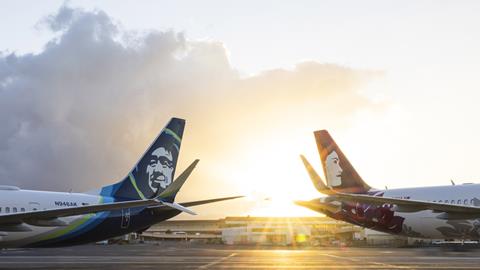Alaska Air Group is expanding its freight business to pursue revenue from sources beyond passenger flights.
Newly introduced flights between Seattle and Tokyo are boosting the company's freight division, and executives are seeing more cargo transport potential thanks to Hawaiian Airlines' acquisition of Alaska Airlines last year.
The introduction of Hawaiian Airbus A330 and Boeing 787 is a testament to the transformation of the Seattle-based company's freight units.
“The launch of the Seattle Tokio Narita route has rapidly expanded international cargo capabilities from Asia's third largest market,” said Andrew Harrison, Alaska's chief commercial officer, during a July 24 revenue call.
“We've already passed our first cargo volume target on this route, but there's still a lot to unlock,” he says.

Alaska and Hawaiian deliver cargo to a total of 130 cities, including large US networks in the United States and destinations Hawaiian serves in Asia and the South Pacific.
The Alaska Airlines Group is growing at the Seattle Hub, supported by Hawaiian, with plans to serve at least 12 international cities by 2030. Plans to fly to Seoul from September have already been revealed, with a new route to Rome scheduled to begin in May.
The Hawaiian fleet has also proven useful on the domestic front as the Honolulu-based carrier recently launched two A330 flights a day between Anchorage and Seattle.
The company says one A330 has freight fares equivalent to two Boeing 737 freighters.
The Alaska Air Group reports that it generated $139 million from its freight operations in the second quarter. This is an increase of more than 90% year-on-year compared to freight revenue figures of $72 million from the previous year. The company had not yet completed its Hawaiian acquisition in the second quarter of 2024.
Seattle-based Alaska plans to “reduce and optimize” cargo units from 2026 onwards.
Jason Berry, vice-chairman of Alaska Air Group and president of Horizon Air, the company's local subsidiary, sees the great growth potential for Alaska and Hawaiian cargo units. “We're already seeing synergies from the Alaska-Hawaiian combination,” Berry says.
Improved cargo ship activity is part of the Alaska Airlines Group's plan to establish new revenue streams. The company focuses on revenue from its premium passenger segment and loyalty programme, and ultimately aims to more than half of revenue from channels other than selling passenger seats in the economy.
Harrison calls the cargo another “Air Group's key profit growth engine.”
The total fleet of the Alaska Air Group grew at 12 aircraft in the second quarter. This received three 737 Max 8S, four 737 Max 9s, one 787-9s, two Embraer 175S, and two A330-300 cargo ships.
Alaska Air Cargo, which serves the states of Alaska and Seattle and Los Angeles, delivered two 737s last year. Berry said: “We bring cargo directly to the mainland and connect across 48 (states).”
Meanwhile, Hawaiians have finally reached a long-standing fleet of cargo conversion A330s, operating on behalf of Amazon, a logistics provider whose partnerships occurred during the pandemic-related e-commerce boom.
“It took a while,” Berry says, “It took a while,” “we're beginning to see that business is finally starting to spread its wings and really see what we can do.”


